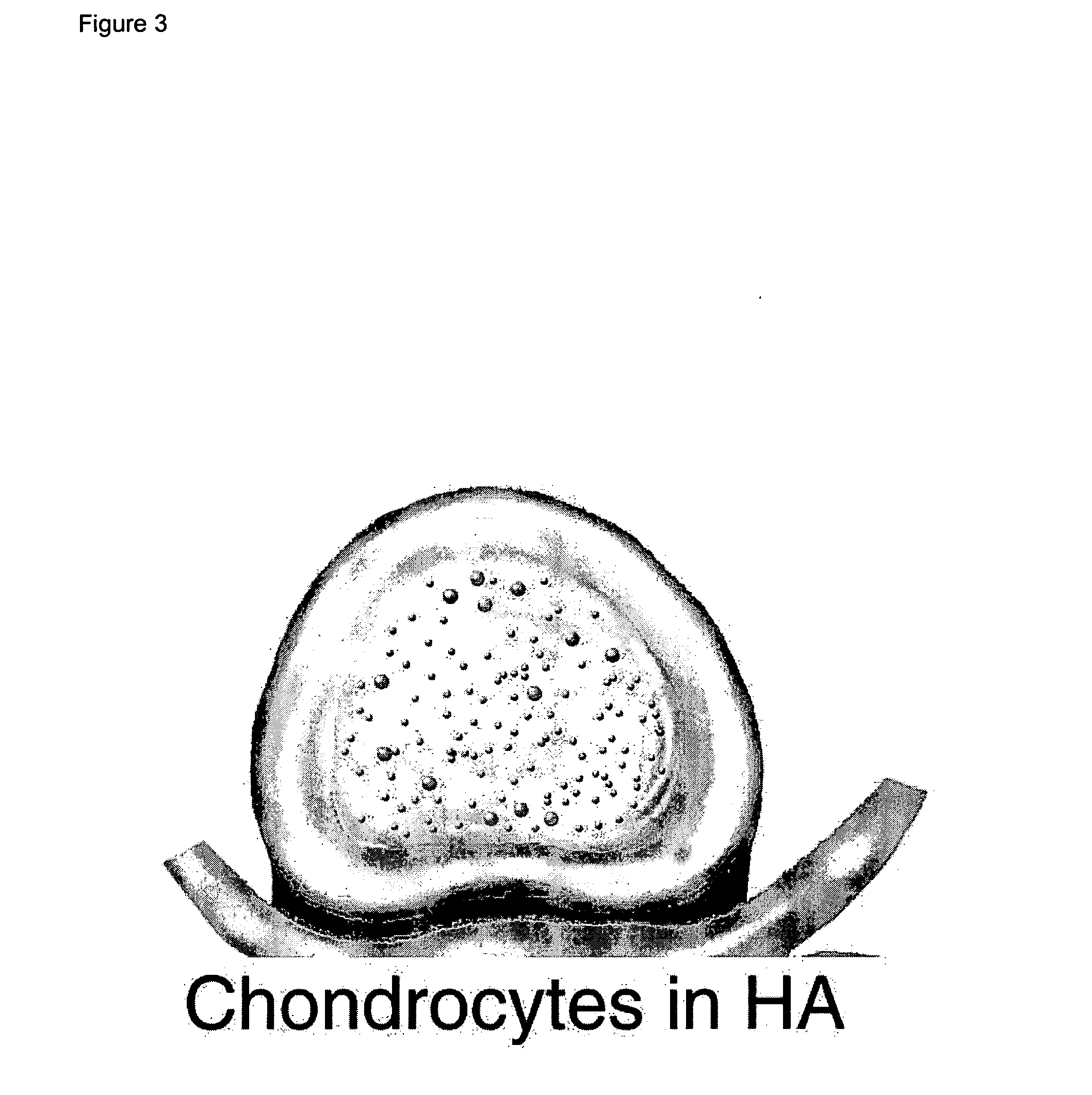Intervertebral disc repair, methods and devices therefor
- Summary
- Abstract
- Description
- Claims
- Application Information
AI Technical Summary
Benefits of technology
Problems solved by technology
Method used
Image
Examples
example
[0035] The following example illustrates transplantation and survival of human chondrocytes transplanted into canine intervertebral disc tissue. In this example, a pilot animal study was conducted to determine whether human articular chondrocytes survive injection to produce cartilaginous matrices in experimental defects created in the intervertebral disk of adult canines. Gross morphologic and histological results obtained from this short-term pilot study (12 weeks) demonstrate that implanted chondrocytes can survive to produce cartilaginous matrices which integrate with surrounding host tissues.
[0036] Surgical Procedure: Prior to induction of anesthesia, six adult female dogs were sedated by the attending veterinarian or the veterinary technician / anesthetist using one of the following combinations: Atropine 0.05 mg / kg IM with or without Acepromizine 0.05-0.2 mg / kg IM. An 18 or 20 gauge 1¼ to 2 inch angio-catheter was placed in the cephalic saphenous or auricular vein for venous a...
PUM
| Property | Measurement | Unit |
|---|---|---|
| Time | aaaaa | aaaaa |
| Time | aaaaa | aaaaa |
| Time | aaaaa | aaaaa |
Abstract
Description
Claims
Application Information
 Login to View More
Login to View More - R&D
- Intellectual Property
- Life Sciences
- Materials
- Tech Scout
- Unparalleled Data Quality
- Higher Quality Content
- 60% Fewer Hallucinations
Browse by: Latest US Patents, China's latest patents, Technical Efficacy Thesaurus, Application Domain, Technology Topic, Popular Technical Reports.
© 2025 PatSnap. All rights reserved.Legal|Privacy policy|Modern Slavery Act Transparency Statement|Sitemap|About US| Contact US: help@patsnap.com



